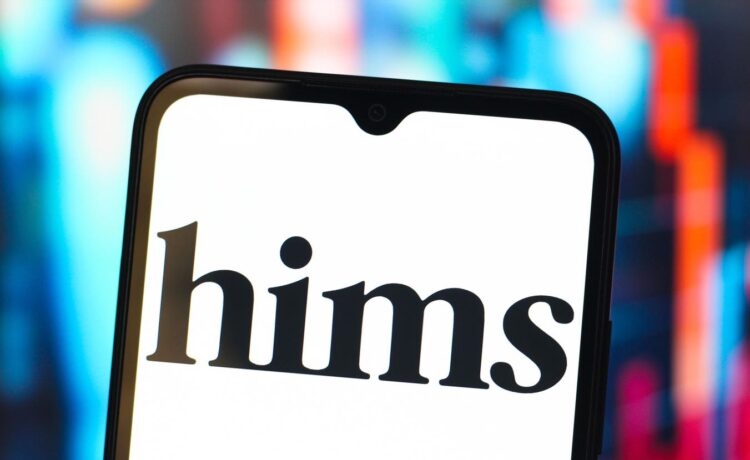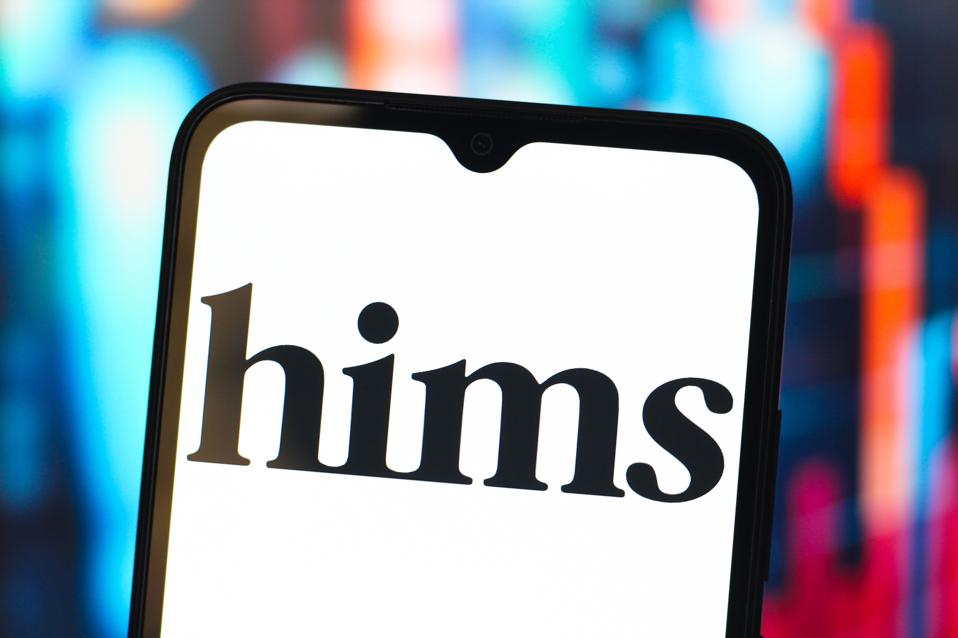CANADA – 2025/03/31: In this photo illustration, the Hims & Hers Health logo is seen displayed on a smartphone screen. (Photo Illustration by Thomas Fuller/SOPA Images/LightRocket via Getty Images)
SOPA Images/LightRocket via Getty Images
Hims & Hers stock (NYSE: HIMS) increased by 16% yesterday following its announcement about expanding into the treatment of menopause and perimenopause—a strategic shift indicating that the company is creating revenue sources beyond its debated compounded GLP-1 obesity treatments. With shares already up 150% year-to-date and trading at approximately $60, the critical question now is: could HIMS stock go up another 2x to $120?
It’s an ambitious target, but let’s explore if the calculations actually support this. Before delving into the numbers, if you are looking for upside with less volatility than owning an individual stock, consider the High Quality Portfolio. It has significantly outperformed its benchmark—a mix of the S&P 500, Russell, and S&P MidCap indexes—and has achieved returns exceeding 105% since its inception. Why is this the case? As a whole, stocks within the HQ Portfolio have delivered better returns with reduced risk compared to the benchmark index; less of a roller-coaster experience, as demonstrated in HQ Portfolio performance metrics.
The Valuation Puzzle: Why 2x Isn’t Crazy
Here’s the intriguing aspect of HIMS—it’s not performing like a conventional high-growth stock. At 7.6x trailing revenues, the multiple appears almost conservative given the company’s offerings. When compared to other high-growth healthcare companies, you’d expect to see a multiple closer to 12-15x for this type of momentum.
So, what’s the route to doubling? It boils down to two factors: revenue growth and multiple expansion.
Can revenues hit $4 billion by 2028?
The company recently reported $2.0 billion in trailing twelve-month revenue, marking an increase of 88.7% from $1.1 billion. That’s not a typo—nearly 90% growth. The latest quarter demonstrated $545 million in sales, a 72.6% increase from $316 million a year prior. Refer to Hims & Hers Revenue Comparison for further information. This growth is primarily fueled by compounded GLP-1s, which have gained considerable popularity as lower-cost alternatives to Wegovy and Zepbound.
Analysts anticipate 58% growth this year and 20% the following year, but these predictions were formulated prior to the menopause/perimenopause launch. If HIMS can maintain a compound annual growth rate of even 25%-30% over the next three years—which appears feasible given its three-year average of 76.3%—then achieving $4 billion in revenue by 2028 is genuinely attainable, perhaps even conservative.
What happens to the multiple?
Here’s where it becomes intriguing. If revenue reaches $4 billion and the stock remains at $60, you’d be looking at merely 3.8x sales. This would position HIMS as one of the least expensive growth narratives in healthcare. However, that’s not how markets typically operate, right?
More plausibly, as the revenue foundation expands and diversifies with the menopause sector, the multiple may modestly compress to around 6x. Do the calculation: 6x times $4 billion equals a $24 billion market capitalization. With approximately 245 million shares outstanding, that pushes the price to above $100—and that’s assuming the multiple actually decreases from current levels.
But wait—shouldn’t the multiple actually expand? For a company that consistently grows by over 75% annually, a 7.6x revenue multiple seems to indicate substantial risk. This brings us to the pertinent question…
What’s Holding Back the Multiple?
- The FDA elephant in the room: Investors are understandably concerned, and they have valid reasons to be. The compounded GLP-1 segment—HIMS’s lucrative area—operates within a regulatory gray zone. The FDA permits compounding pharmacies to produce drug versions during shortages, but what occurs if Novo Nordisk and Eli Lilly pursue legal action against Hims & Hers? What if the FDA tightens regulations? This isn’t purely theoretical. The FDA has already indicated that it is closely monitoring the matter. Any regulatory intervention could eliminate a significant portion of HIMS’s revenue overnight. This is why the market is keeping the multiple restrained—it’s factoring in existential risk.
- The profitability question: HIMS is currently operating with narrow margins. While revenue is soaring, the company is still heavily investing in customer acquisition and infrastructure. Proponents argue that margins will naturally improve with growth—fixed costs become more manageable, brand recognition lowers customer acquisition costs (CAC), and the business model grows more efficient. This is the strategy for every high-growth platform business.
However, until sustained profitability improvements are evident, the market won’t grant HIMS a premium SaaS-like revenue multiple. Growth is impressive, but investors want to witness a pathway to substantial earnings power.
Key Drivers That Could Unlock the 2x
Diversification reduces concentration risk
The menopause launch is a clever strategy as it addresses the most significant concerns: over-dependence on compounded GLP-1s. Undoubtedly, the company has additional revenue streams, including sexual health, mental health, and dermatology, among others. Menopause and perimenopause impact millions of women; it’s an underserved market, and HIMS’s direct-to-consumer approach is ideally suited for those conditions where patients often feel stigmatized when seeking traditional care.
If this sector can produce even $500-750 million in annual revenue within 2-3 years, HIMS would start to appear less like a one-dimensional entity reliant on favorable regulations and more like a legitimate, multi-faceted telehealth provider.
Platform economics start to kick in
HIMS has constructed an infrastructure encompassing a telehealth platform, pharmacy fulfillment, and customer relationships. Every new sector they introduce capitalizes on that existing framework. The CAC to acquire a menopause customer diminishes if that customer is already utilizing HIMS for dermatological or hair loss needs. Cross-selling becomes incredibly effective. This is where the business model begins to look remarkably appealing.
The Risks That Could Derail Everything
- Regulatory intervention: If the FDA chooses to impose restrictions on compounded GLP-1s before HIMS can effectively diversify, the stock could lose half of its value in a single day. This represents the primary risk, and it’s quite tangible. The pharmaceutical lobbying efforts are strong, and they are not pleased about losing billions to compounding entities.
- Increased competition: HIMS is not the sole contender in telehealth or compounded medications. If competitors enter the market with superior pricing or enhanced patient experiences, margins could shrink and growth could plateau. The barriers to entry in telehealth are not as formidable as in traditional healthcare.
- Multiple compression across growth stocks: We’re presuming HIMS can either maintain or elevate its multiple, but what if there’s a wider market shift away from growth stocks? Heightened interest rates, recession anxieties, or risk-averse sentiments may compress multiples broadly, dragging HIMS down regardless of its fundamentals.
Remember, investing in a single stock without thorough analysis can be risky. Consider the Trefis Reinforced Value (RV) Portfolio, which has outperformed its all-cap stock benchmark (a mix of the S&P 500, S&P mid-cap, and Russell 2000 benchmark indices) to yield strong returns for investors. Why is this the case? The quarterly rebalanced mix of large-, mid-, and small-cap RV Portfolio stocks offered a responsive approach to capitalize on favorable market conditions while minimizing losses when markets decline, as elaborated in RV Portfolio performance metrics.
The Verdict
Can HIMS double to $120? The mathematical pathway exists. Reach $4 billion in revenue with solid execution, maintain a 6x multiple, and you’re looking at $100-120 per share within three years. That’s not an unrealistic scenario—it’s actually quite conservative given the growth trajectory.
However, here’s the catch: the valuation seems low because the risks are genuine. The FDA’s imminent scrutiny over compounded GLP-1s is serious, and until HIMS demonstrates it can generate significant revenue outside that sphere, investors will keep the multiple suppressed.
The menopause launch is a strategic move. If it is successful—and if the regulatory environment remains favorable for another 12-18 months—HIMS could undoubtedly double. But if the FDA acts before the company diversifies, this stock could fall by half before it has the chance to double.
Placing a bet on HIMS at the current levels essentially amounts to a wager on timing: can management establish a diversified revenue base before regulators put an end to the compounded GLP-1 advantage? For investors with a higher risk tolerance who believe the answer is yes, the risk-reward dynamic appears compelling. For everyone else, it may be prudent to wait and observe how the menopause launch performs over the next two quarters.



